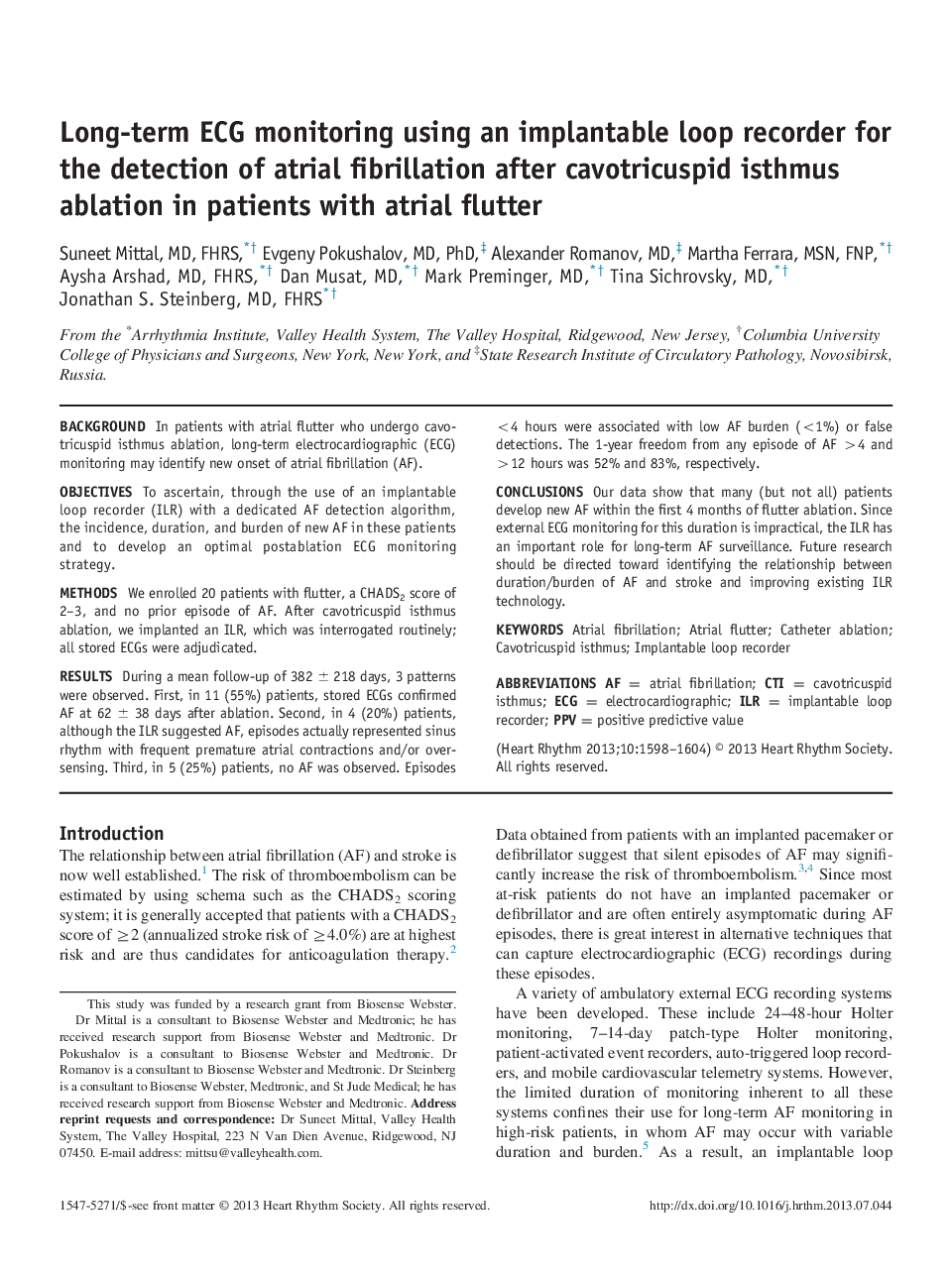| Article ID | Journal | Published Year | Pages | File Type |
|---|---|---|---|---|
| 2922099 | Heart Rhythm | 2013 | 7 Pages |
BackgroundIn patients with atrial flutter who undergo cavotricuspid isthmus ablation, long-term electrocardiographic (ECG) monitoring may identify new onset of atrial fibrillation (AF).ObjectivesTo ascertain, through the use of an implantable loop recorder (ILR) with a dedicated AF detection algorithm, the incidence, duration, and burden of new AF in these patients and to develop an optimal postablation ECG monitoring strategy.MethodsWe enrolled 20 patients with flutter, a CHADS2 score of 2–3, and no prior episode of AF. After cavotricuspid isthmus ablation, we implanted an ILR, which was interrogated routinely; all stored ECGs were adjudicated.ResultsDuring a mean follow-up of 382 ± 218 days, 3 patterns were observed. First, in 11 (55%) patients, stored ECGs confirmed AF at 62 ± 38 days after ablation. Second, in 4 (20%) patients, although the ILR suggested AF, episodes actually represented sinus rhythm with frequent premature atrial contractions and/or oversensing. Third, in 5 (25%) patients, no AF was observed. Episodes <4 hours were associated with low AF burden (<1%) or false detections. The 1-year freedom from any episode of AF >4 and >12 hours was 52% and 83%, respectively.ConclusionsOur data show that many (but not all) patients develop new AF within the first 4 months of flutter ablation. Since external ECG monitoring for this duration is impractical, the ILR has an important role for long-term AF surveillance. Future research should be directed toward identifying the relationship between duration/burden of AF and stroke and improving existing ILR technology.
